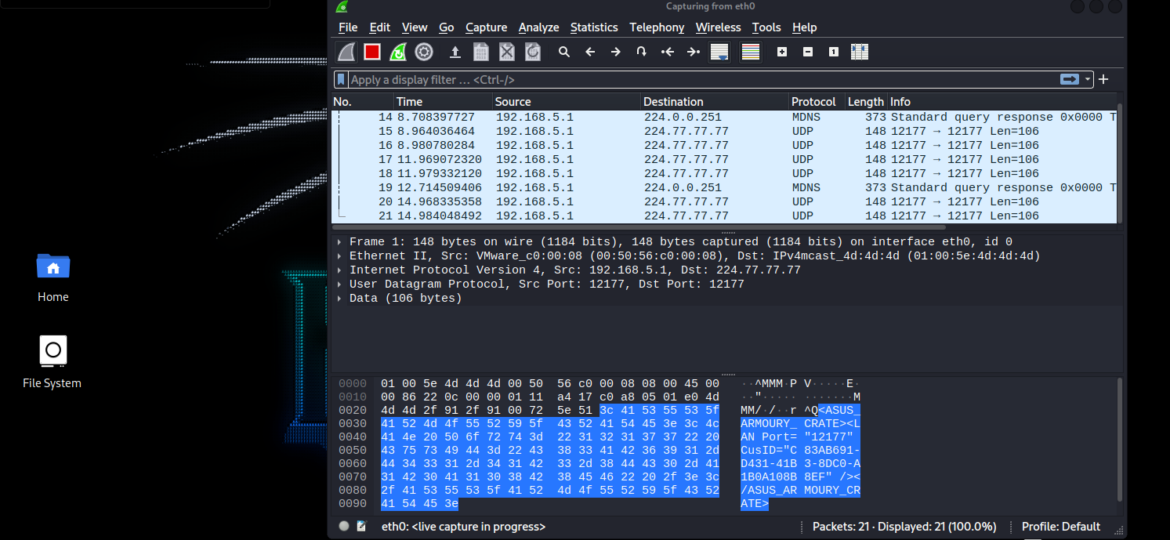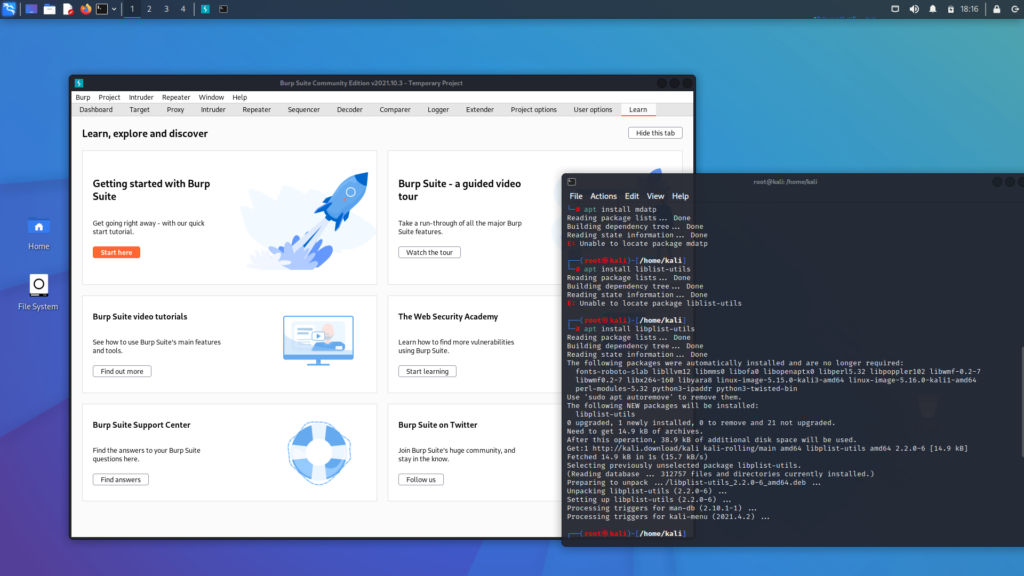
Hacking through an organization’s security protections required a lot of skills and time in the past. However, today’s technological advancements make it easier for hackers to detect loopholes in an organization. Cybercriminals are becoming more sophisticated and using sober ways to attack that are even hard to detect. The purpose of penetration testing is to help companies identify the vulnerabilities in their IT infrastructure before hackers exploit them.
Penetration testing helps to improve the security of your organization. It’s a complex yet creative way where you must understand what’s going on in your IT environment. Pentesting has become an essential part of robust security programs. Kali Linux is designed for penetration testing. It’s one of the most accessible and common suites of penetration testing tools available today.
In this article, we will discuss penetration testing and the use of Kali Linux for penetration testing. Let’s get started.
What is Penetration Testing?
Penetration testing or pentesting intends to detect the loopholes or vulnerabilities in your system and help to ensure that robust security measures are in place to ensure the system’s functionality and data security. It’s a type of black-box testing method that proposes to make authorized attempts to violate the integrity and security of an application, system, database, or network. It aims to identify and document all the security flaws in a system that can compromise it before hackers attempt.
Penetration tests can be carried out on individual applications, IP address ranges, or simply based on an organization’s name. When conducted appropriately, pentesting does not only stop hackers from unauthorized access, but it creates real-world scenarios showing businesses how well their current defense system performs when confronted with a potential cyber attack.
Why There Is A Need for Penetration Testing?
Penetration testing enables organizations to evaluate the overall security of their IT infrastructure. A potential cyber-attack can put an organization at risk by compromising data or stealing sensitive information. However, penetration testing tools can expose the weak points in an organization’s security layer and allow security experts to address any shortcomings before they become complex liabilities.
Penetration testing can help you in the following ways.
- Test Security Controls_ It provides insights into the overall health of your network, application, and physical security layers.
- Ensure compliance_ Organizations can maintain information security compliance using industry standards for pentesting.
- Find real-world vulnerabilties_ Identify the endpoints in your system that are most susceptible to attack from criminals.
- Reinforce security posture_ Pentesting helps companies prioritize and address their vulnerabilities with a security program.
After understanding the concept of penetration testing and how it helps organizations protect themselves against potential cyber-attacks, let’s move towards how Kali Linux helps in penetration testing.

What is Kali Linux And How Does it Help in Penetration Testing?
Kali Linux is one of the most widely used penetration testing tools. It’s a Debian-based Linux distribution containing hundreds of penetration testing tools. Penetration testing becomes much easier with the help of Kali. Advanced users can use Kali to perform information security tests for identifying and resolving potential vulnerabilities within their IT infrastructure.
It’s an incredibly powerful tool that comes with over 600 utilities, including popular options like Nmap, Wireshark, BurpSuite, Aircrack, and more. During penetration testing, there is a need to pay special attention to possible attack vectors and various other problems.
Four Stages of Penetration Testing
Penetration testing is classified into the following four stages.
- Information Gathering
- Analyzing vulnerabilities
- Traffic sniffing and spoofing
- Stress Testing
Let’s take a closer look at the four stages of penetration testing.
Information Gathering
Information gathering is the first step while performing the penetration test of a product. It lets you see if the product or system under test can be investigated by outside or if a potential hacker could exploit data. For example, information regarding technologies, protocols, ports, software version, product architecture, and entry points may increase the chance of an attack’s success significantly. The goal is to protect critical information or make it extremely difficult for hackers to expose data.
Here are some of the most helpful tools for investigating your system’s information security and gathering valuable data of tested products.
- Amap_ This tool can be used to see a list of applications executing on specified ports and identify non-ASCII-based applications.
- DNSMap_ Testers use this tool to check infrastructure security and collect information about IP netblocks, domain names, subdomains, and so on. It can also be used to brute-force subdomains at the enumeration stage.
- Nmap_ Network mapper is a famous open-source utility for pentesting. It can be used for monitoring host and service uptimes, inventorying a network, and managing service upgrade schedules.
- Arp-scan_ You can use this tool to scan your network with layer-2, Ethernet ARP packets, and MAC. You can use ARP packets to particular hosts on your local network using arp-scan and see the response.
Analyzing Vulnerabilities
Vulnerability assessment is one of the essential stages of penetration testing. This process is quite similar to information gathering, but it has a particular goal. Analyzing vulnerabilities aims to identify weaknesses that can be exploited by attackers. This stage plays a vital role in penetration testing, as vulnerabilities are what make your system prone to cyber-attacks.
Some robust and helpful tools can help you achieve the goal of vulnerability assessment. Here are some of the most common and widely-used Kali Linux tools for finding vulnerabilities in IT infrastructure.
- APT2_ It’s a famous toolset to automate penetration testing. APT2 performs Nmap scanning and import scanning results from other tools, such as Nessus, Nexpose, and Nmap. It used processed results for launching exploit.
- BruteXSS_ is a robust and fast cross-site scripting brute force tool. It is used to brute force parameters. This tool can inject various payloads from a particular wordlist to parameters and scan them to check if they are prone to XSS vulnerability.
- Cisco Torch_ is a useful tool for fingerprinting, mass scanning, and exploitation. It can be used to discover remote hosts with running Telnet, NTP, Web, SNMP, and SSH services and launch dictionary attacks against discovered services.
- NoSQLMap_ It’s an open-source tool created to automate and audit injection attacks. This tool can be used to exploit default configuration vulnerabilities in NoSQL databases and web applications.
Traffic Sniffing and Spoofing
Sniffing and spoofing traffic is one of the important steps in penetration testing. While conducting penetration testing, sniffing and spoofing can be done for various reasons. It can be used to detect network or system vulnerabilities and identify locations that hackers can target. Moreover, it can be used to check the paths from which packets pass through the network and see if those information packets are encrypted or not.
If the packet is intercepted or contains any useful information that can be accessed by a hacker, it can pose a significant threat to network security. The goal is to make it difficult for the hacker to sniff and spoof packets sent across the network with the help of tunneling, encryption, and other techniques.
Here are some of the most common Kali Linux tools for traffic sniffing and spoofing.
- Arpspoof_ is a famous tool to intercept packets on a local network. It redirects packets being sent with the local network by substituting responses.
- Burp Suite_ It is an integrated platform to run web application tests. This platform includes a suite of tools that can be used at each testing phase, initiating with website map creation and moving on to identification and exploitation of vulnerabilities.
- DNSChef_ is a highly deployable DNS proxy leveraged by malware analysts and penetration testers. This cross-platform tool can forge responses depending on the list of included and excluded domains. DNS proxy is used for assessing network traffic.
- Wireshark_ It’s a famous network protocol analyzed. This tool provided insights into your network at a micro-level. However, it’s not that easy to sue and demands extra time to study its functionalities and features.
Stress Testing
Stress testings tools aim to put the tested application or system under situations where it can act in a way that can compromise the security and open door for potential cyber-attacks. For example, you can simulate a scenario where the application is overloaded, and a time window appears while launching. It can create an opportunity for attacks or allow hackers to inject malicious code.
Here are the useful Kali Linux tools for stress testing.
- DHCPig_ It is an optimized script for starting a DHCP exhaustion attack. It consumes all IP addresses on a local network and bans new users from getting IP addresses.
- FunkLoad_ It’s a famous web tester to test load on a web application. FunkLoad allows you to perform tasks, such as performance and load testing, functional web project testing, and stress testing.
- MDK3_ A proof-of-concept tool that can be used to exploit vulnerabilities. This tool can be used for de-authenticating clients, Wi-Fi jamming, or confusing wireless network monitors. With MDK3, you can detect minor and critical performance issues and vulnerable spots of the tested network.
- SlowHTTPTest_ This tool is used to simulate a low-bandwidth application layer Denial-of-Service attack. It has a set of configurations, and it’s compatible with various Linux platforms.
Final Words
Kali Linux has an impressively rich suite of tools for all phases of penetration testing. Every penetration tester should know about the Kali Linux tools as they are extremely helpful to identify vulnerabilities or loopholes in a system or network. In this article, we have discussed different stages of penetration testing and a set of useful Kali Linux tools for each stage. However, you can choose a tool based on the goals and tasks of the ongoing project. Apart from it, Kali Linux is a good starting point, and there is a lot of information about it.

